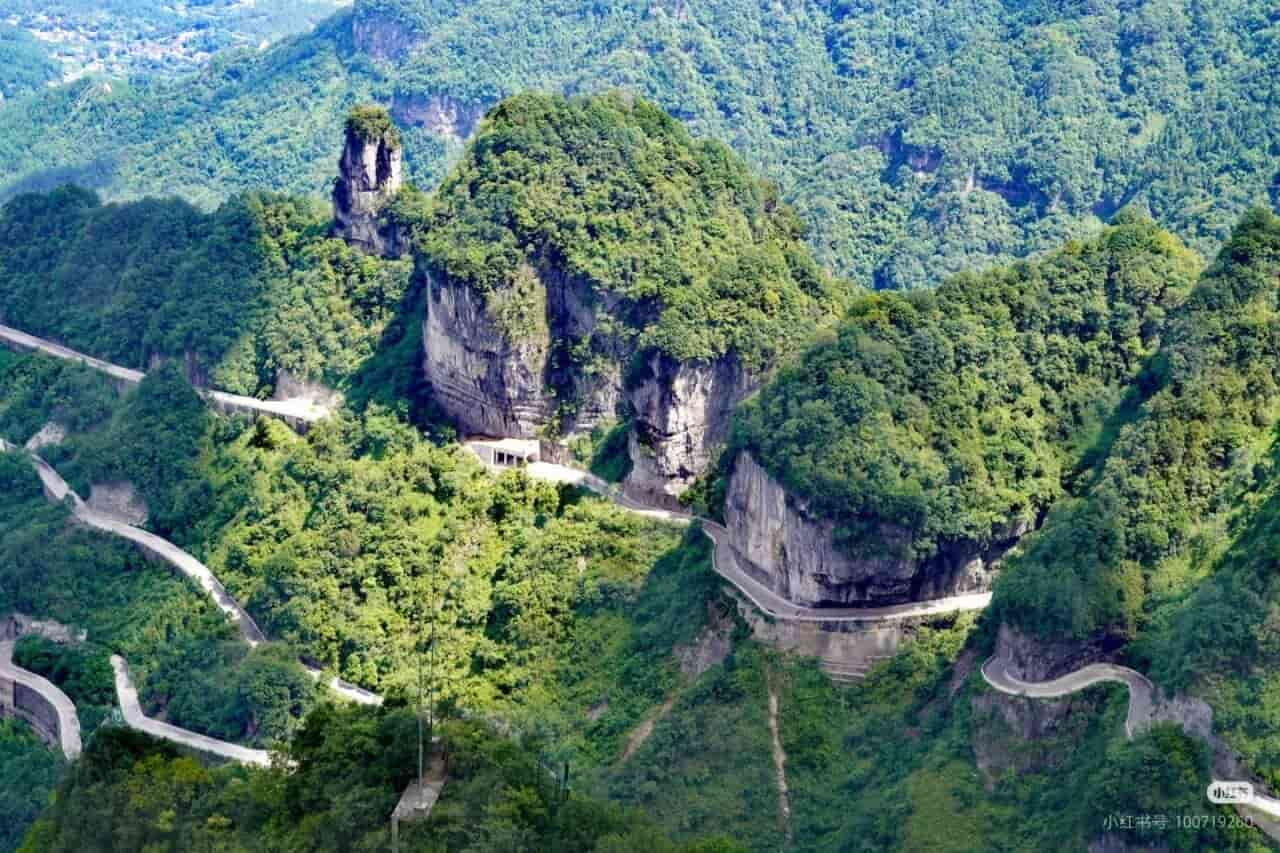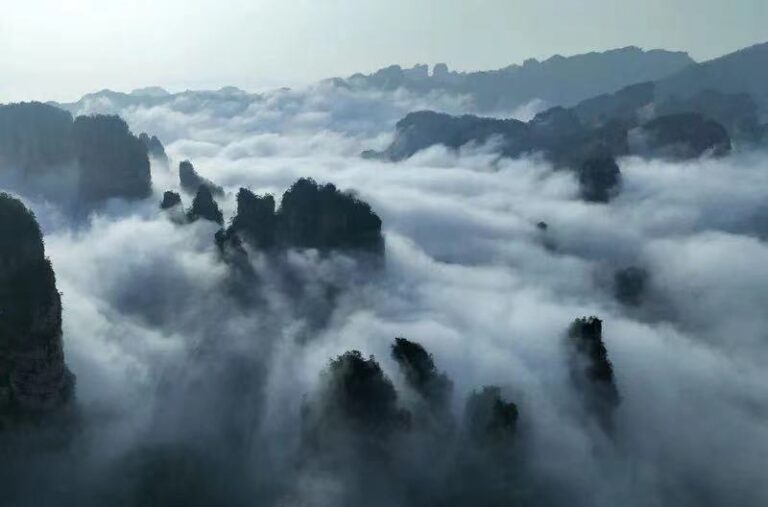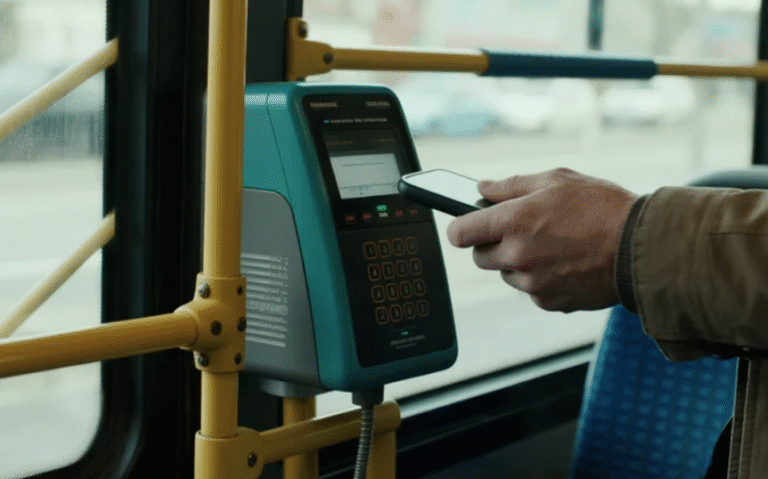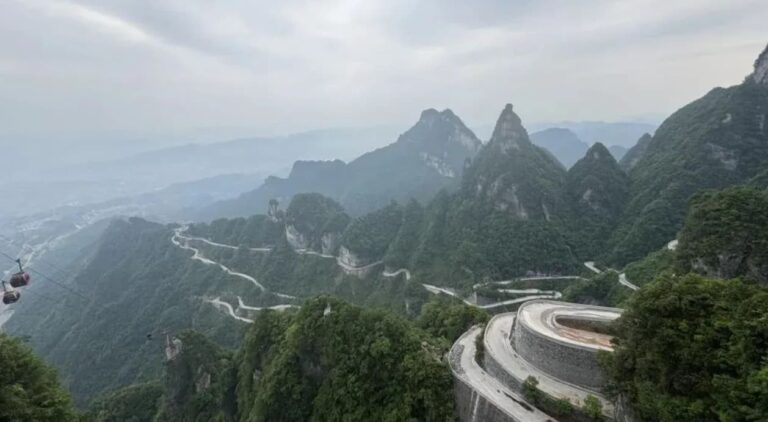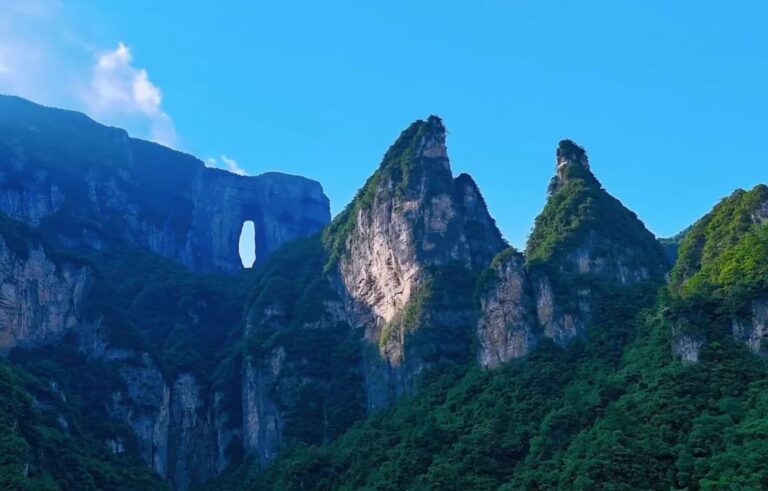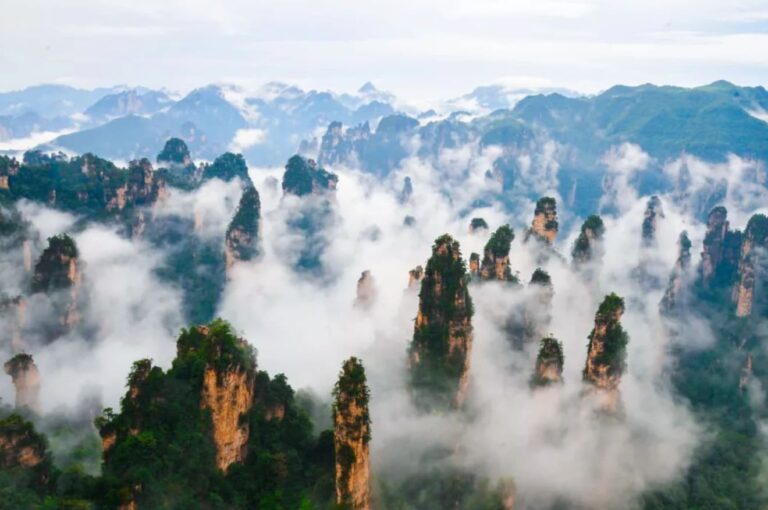Zhangjiajie and Fenghuang Journey
Securing a sleeper train ticket from Hebei to Zhangjiajie’s Tianmen Cave was surprisingly easy—no frantic ticket scramble like other routes. We arrived before dawn the next day. The taxi we booked online arrived punctually. By the time we reached a small family-run inn, daybreak was just breaking. The owner rose early to open the door for us. After settling our luggage, we headed straight for our main destination—Zhangjiajie National Forest Park.
Only upon arrival did we realize the South Gate was Zhangjiajie’s original mountain entrance, where the most iconic scenery resides. Hiking is definitely our forte, so we headed toward Huangshizhai (Yellow Stone Village), choosing to climb while our energy was still high.
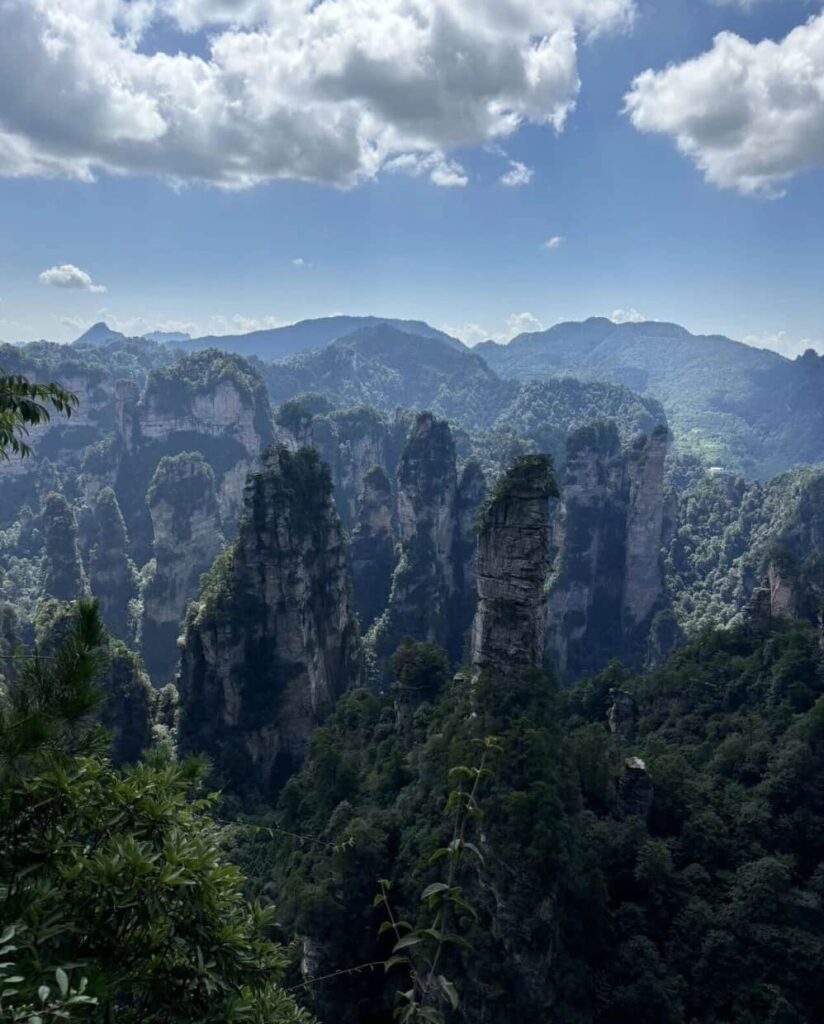
Perhaps because we started early, few people were around—just the golden sunrise and birdsong accompanied us. The mountains weren’t particularly high. While Zhangjiajie’s peaks reach over 1,000 meters, the entire scenic area sits at an elevation of 600 meters, making our climb to the summit relatively easy.
Though we now see mountains, hundreds of millions of years ago, this was the ocean floor. It’s truly mysterious what Earth has endured and how billions of years of transformation have shaped it into its present form.
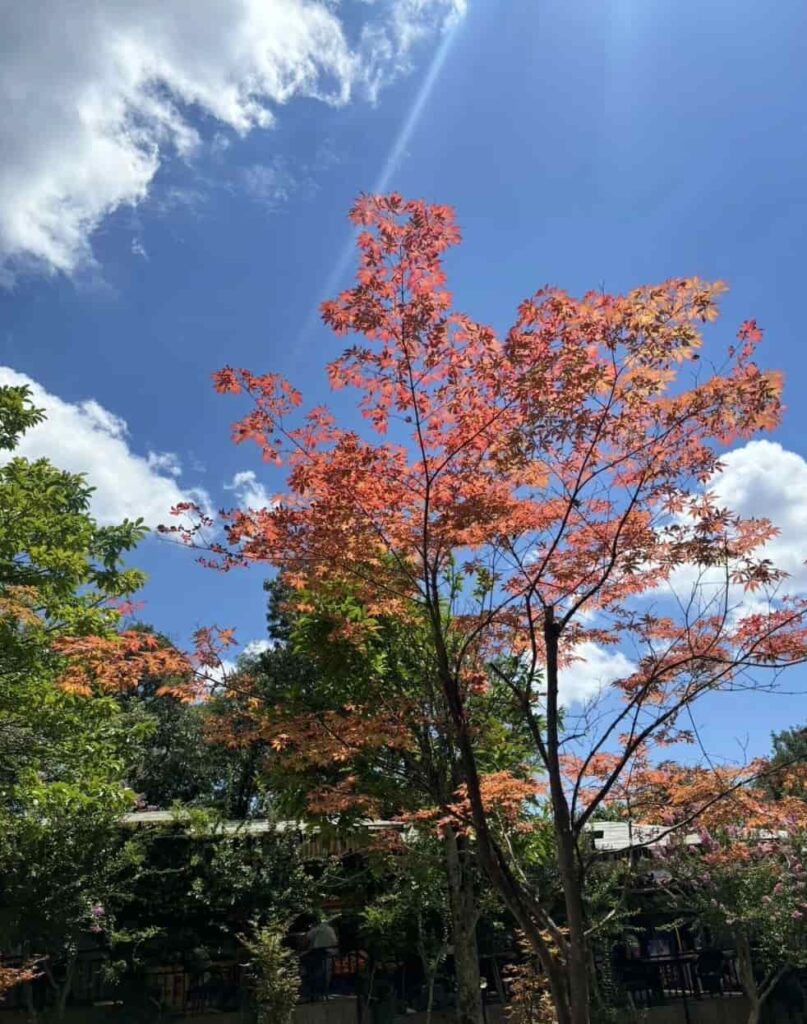
After Huangshizhai, we headed toward Yangjiajie Scenic Area, passing several minor attractions along the way. Among them, a small temple from the Ming Dynasty (14th–17th century) stood out. What I remember most vividly was the ginkgo tree in front of that temple gate. At its very tips, a few leaves had already begun to turn yellow impatiently, ready to fall. Though summer was far from over, I could already sense autumn’s approach. Since Yangjiajie required an uphill cable car ride, we opted to descend by cable car back to Huangshizhai’s starting point.
Back at the homestay, we ordered a platter of traditional smoked sausage and cured pork. The landlady was very honest—the plate was generously filled with cured meats, truly fragrant. The next day, we entered through Zimugang Gate (one of the park entrances) and took a shuttle bus to the Bailong Elevator—a glass elevator built on the edge of a sheer cliff. We explored from Tianzi Mountain all the way to Yangjiajie. Since we’d already admired the mountain views the previous day, Tianzi Mountain didn’t offer anything particularly breathtaking. At the summit of Zhangjiajie’s Tianzi Mountain, the first hint of autumn’s crimson.
This time we walked down the mountain, enjoying some scenic spots along the way, like the Echo Wall. Similarly, there were few people on the descent. After descending, we took the sightseeing bus to Golden Whip Stream, a scenic valley trail. Crossing Golden Whip Stream leads to the South Gate, about 4.6 miles from our lodging. By the time we returned, we were too exhausted to speak. Over two days in Zhangjiajie, we walked nearly 15 miles each day—finally done!
On the third day, our high-speed train to Fenghuang departed at noon, so we had a leisurely morning. We strolled around, had breakfast, and even asked the shop owner for a few succulent plants (like small cacti). The succulents in Zhangjiajie thrive so well—they don’t even need pots, growing robustly right out of rock crevices.
The ancient town isn’t large, but it’s sweltering. As the hometown of Chinese writer Shen Congwen (1902–1988), it gained fame through his exquisitely beautiful prose. The authentic, rustic lifestyle depicted in his autobiography has long vanished. The blacksmith shops and butcher stalls he described have been replaced by cookie-cutter shops, with identical storefronts appearing every few steps.
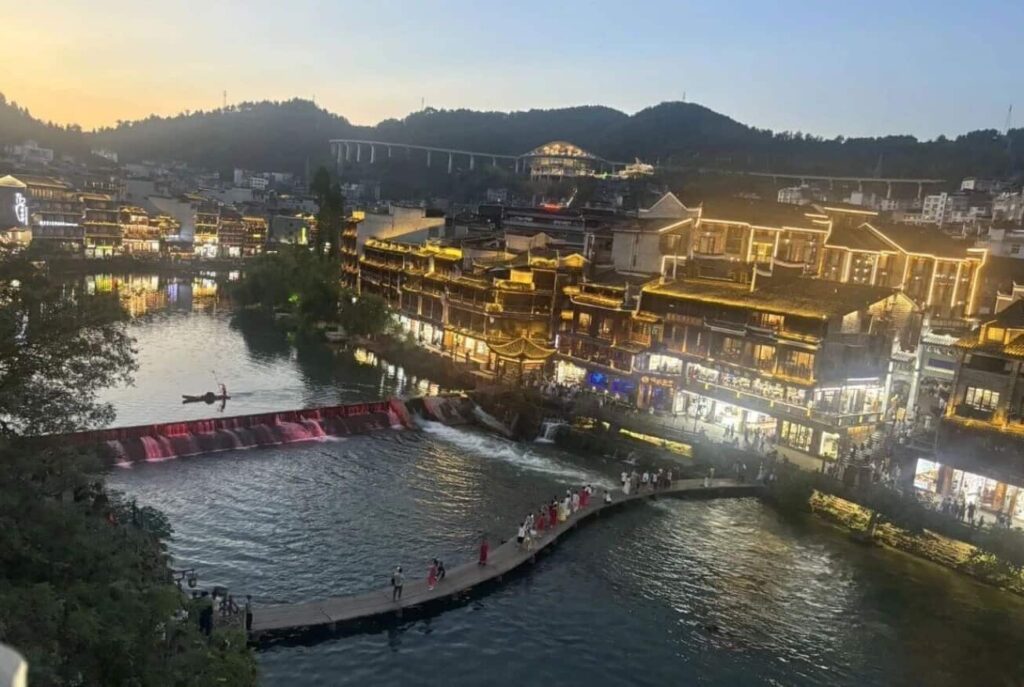
Daytime in Fenghuang Ancient Town is shrouded in heat haze, making one feel scorched. Only after sunset, when the sun dips below the horizon, does a faint cool breeze stir, and the streets gradually fill with evening strollers.
The history of Fenghuang Ancient Town is far more captivating than its present-day existence. It has witnessed invasions and defenses, wars and conflicts. For centuries, generations of people have lived here, becoming protagonists in the unfolding of history. Yet one wonders if the fiery-spirited Miao people still remain.
On the morning of our departure, we wandered through the morning market, where farmers casually sold their wares by the roadside. Everything was cheap and abundant. Finally, on a typhoon day when we couldn’t go out, I painted a begonia—one I’d discovered while hiking in Zhangjiajie—as the closing chapter of this journey.
